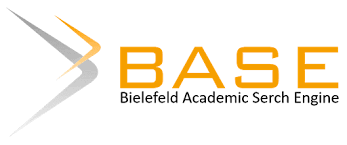KARAKTERISTIK TES PRESTASI BELAJAR BERDASARKAN PENDEKATAN KLASIK DAN ITEM RESPONSE THEORY
Keywords:
Slope, Classical Approach, IRT ApproachAbstract
This research is empirical study in order to determine (1) the characteristics of achievement test which analyzed with classical approach, (2) the characteristics of achievement test which analyzed with Item Response Theory (IRT) approach and, (3) the comparison of slope that analyzed with classical and IRT approaches. This research was conducted in an elementary school in Tabanan with data retrieval using stratified random sampling technique. Characteristics of the test analyzed using Parscale Program (Muraki & Bock, 1977) with Marginal Maximum likelihood estimation. The results of the analyzed based on the classical approach shows that the average value of coefficient Pearson correlation 0.373 and the average of coefficient Polyserial correlation 0.460 more than 0.2 That means the general tests that arranged have good slope.. The results of analysis IRT approach indicated that the minimum value of probability 0.198 (greater than 0.05), which means fit with the model. The mean of slope 0.644, greater than 0.2. That means the tests have good slope. Similarly, the value of location of the test -.0.430, that means the tests have moderate level of difficulty. Analysis of test with IRT approach have an average slope greater than tests that analyze with classical approach. That means the analysis test with IRT approach more careful in distinguishing abilities of students with one another.
Downloads
References
Allen, M.J. & Yen, W.M. (1979). Introduction to measurement theory. Belmont, CA : Wadsworth, MC.
Bechger, T. M., Maris, G., Verstralen, H. H., & Beguin, A. A. (2003). Using Classical Test Theory in Combination With Item Response T heory. Applied Psychological
Measurement, 27 (5), 319–334.
Depdiknas, (2003). Undang-Undang RI Nomor 20, Tahun 2003, tentang Sistem Pendidikan Nasional.
DeMars, C. (2002). Incomplete data and item parameter estimates under JMLE and MML estimation. Applied Measurement in Education, 15, 15-31.
Embretson, S. E., & Reise, S. P. (2000). Item Response Theory for Psychologist. NJ: Lawrence Erlbaum Associates Inc.
Fan, X. (1998). Item Response Theory and Classical Test Theory: An Empirical Comparison of Their Item/Response Person Statistics. Educational and
Psychological Measurement, 58 (3), 357-381
Hambleton, R.K., & Swaminathan, H. (1985). Item response theory. Boston, MA: Kluwer Inc.
Hambleton, R.K., Swaminathan, H., & Rogers, H. J. (1991). Fundamental of item response theory. Newbury Park, CA: Sage Publication Inc.
Joreskog, K.G. & Sorbom, D. (1996). LISREL 8: structural equation modeling. Chicago: Scientific Software International.
Mardapi, D. (2008). Teknik penyusunan tes dan nontes. Yogyakarta: Mitra Cendikia(2012). Pengukuran, penilaian, & evaluasi pendidikan. Yogyakarta: Nuha Medika
McDonald, P., & Paunonen, S. V. (2002). A Monte Carlo Comparison of Item and Person Statistics Based on Item Response Theory Versus Classical Test Theory. Educational and Psychological Measurement, 62 (6), 921-94
Muraki, E. (1992). A generalized partial credit model. Aplication of an algorithm. Applied Psychological Measurement, 16, 159-176.
Muraki,E., & Bock, R.D. (1997). Parscale : IRT item analysis and test scoring for rating-scale data. Chicago: Scientific Software International.
Ridho A. (2005). Karakteristik Psikometrik Tes Berdasarkan Pendekatan Teori TesKlasik dan Teori Respon Aitem. Fakultas Psikologi UIN. Malang
Ridho A. (2007). Karakteristik Psikometrik Tes Berdasarkan Pendekatan Teori TesKlasik dan Teori Respon Aitem Jurnal Psikologi INSAN, 2 (2), 1- statslab-rshiny.fmipa.unej.ac.i
Downloads
Published
How to Cite
Issue
Section
License
Copyright (c) 2021 LPPM Universitas PGRI Mahadewa Indonesia

This work is licensed under a Creative Commons Attribution-NonCommercial-ShareAlike 4.0 International License.
Hak cipta mencakup hak eksklusif untuk mereproduksi dan mengirimkan artikel ini dalam semua bentuk dan media, termasuk mencetak ulang, memotret, mikrofilm dan reproduksi serupa lainnya, serta terjemahannya. Reproduksi dari bagian manapun dari jurnal ini, penyimpanannya di database dan transmisinya dengan bentuk atau media apa pun, seperti salinan elektronik, elektrostatik dan mekanis, fotokopi, rekaman, media magnetik, dan lain-lain, akan diizinkan hanya dengan izin tertulis dari penerbit jurnal.







1_(1).jpg)











